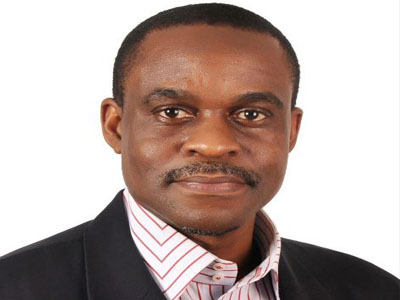By Felicia Nwosu
Against the back-drop of strengthening agency-client relationship for mutual growth, Kelechi Nwosu, the Chief Executive Officer of TBWA Concept, has revealed that the excess of supply over demand for agency services and the dearth of big advertisers are responsible for skewing the agency-client relationship towards the few big ticket advertisers.
He therefore advised agencies to focus on providing real values that are measureable to clients and also ensure that such values are directly tied to the clients’ bottom-line and boost return on investment to stand out in this surfeited market.
Nwosu averred that such will also earn trust for the agency and position it as a must-go-to solution provider for brands. He reiterated the importance of both parties embracing symbiotic measure for mutual growth while urging agencies to leverage their expertise to demonstrate to clients why their services are worth their charge.
Nwosu made this averment during a one-on-one chat with foremost advertising, marketing and brand centric television program, MARKETING EDGE on TV.
“There is need for agencies to come to the table with more value, with more measurement. There is a need for clients to come to the table with more appreciation and better payment. In the relationship between the agencies and the clients, the power is still very much skewed on the side of the clients because there are few big advertisers in our country and everyone is chasing after them. Sometimes, you realise that when you partner agencies, you get the best out of them and that requires good money to be paid but you need to make sure that agencies are delivering on what you are paying them for
The TBWA Concept CEO also reaffirmed the power of leveraging technology as a propeller in creating tremendous value that endears and spurs clients to the agencies.
“For some of us, the challenge is how we make sure that we are creating value, if you create superior value for clients, they won’t go. Think about this journey, data, analytics, how does the data fuel the work that you are doing, the briefings, even in product development, how do you use data and analytics to do predictable analysis, test the creative works, how do you use it to modify your campaigns while your campaigns are going on, how do you get data to evaluate and do attribution, outline the processes to optimise the campaigns. That is the cycle that we must begin to analyse and use them.
The brand builder advised practitioners to understand the dynamism that come with today’s marketing landscape and move with the shift to avoid be consumed in the web of new technologies.
“Innovations are useful to us, we have to augment what we have by leaning on technology and we also need to mention that we don’t lose our jobs to technology, because if you think about all of the AI, and all the things that are happening, there could be a threat, they may not necessarily be as much a threat right now, but it could be in the future if we do not understand how to use those technology to improve or augment what we are doing, so that is the duty of every agency person, whether agency head or management to understand the prevalent technology, understand what the future is, so that you can see how to use it. We must be able to do that.
He expressed his view over the decline of talent optimisation through brain drain syndrome and how professionals in the creative industry could mitigate against its devastating adverse effects.
“We have to keep training people in the pipeline to come up fast. 220 million people, mostly young, educated, ambitious, there must be enough people in our country to fill the gaps, and if you look at the numbers that I saw, about six million people, I saw that on channels. In 2022, one point six million people, we have got a lot of people but the only problem is that, those who are going away are the most skilled ones but we have got enough people in theory, to fill the line, so I won’t deny that it is a problem because you have people you have trained in your working culture and they get up and go, we are all wondering how to fill that gap. But in the meantime, what we need to do is to allow people to work remotely and have a pipeline of ambitious people who can fill these positions while we are talking about a larger macroeconomics.”







Comment
No comments found.